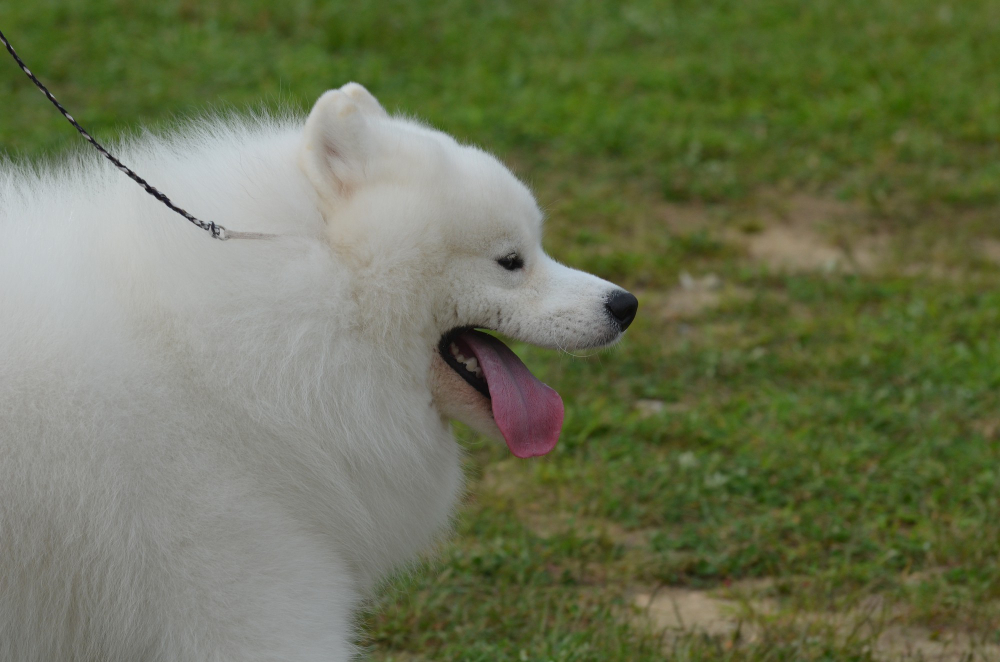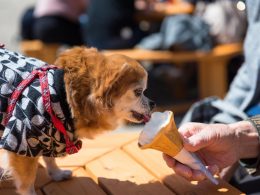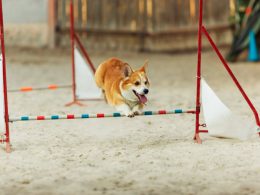
American Eskimo and Japanese Spitz are two canine breeds with a lot in common regarding looks, character quirks, and mannerisms. For this reason, it is practically hard to tell a Japanese Spitz out of an American Eskimo without foreknowledge of the features that set them apart.
These tiny to medium-sized dogs have white coats and are available in various sizes. These breeds are well-known for their friendly disposition toward both humans and other animals, so it’s no surprise that dog owners love and admire them.
Small to medium-sized Nordic-type dogs, the American Eskimo looks like a miniature Samoyed; they are generous, affectionate dogs that are resilient and playful and great with children. The Alaskan Eskimo is the ancestor of the American Eskimo—these breeds are easier to train since they are eager to please their masters and possess a high level of intelligence.
They have brown eyes, a white coat, and heads slightly below knee height. They might be small or medium in size. This breed has a low risk of getting illnesses; however, it occasionally suffers from issues like patella luxation and watery eyes.
This dog breed is a part of the Spitz family, which means that the Japanese Spitz and the American Eskimos share a common progenitor. Even so, their places of birth are different.
What is the Difference Between a Japanese Spitz and a Samoyed?
Appearance, longevity, personality, training, activity level, and barking level are the primary distinctions between the Japanese Spitz and Samoyed. Although both breeds are friendly, Samoyeds are attentive and can serve as ideal watchdogs in certain situations.
Samoyeds can be extremely clinging compared to other breeds, but Japanese Spitzes are just as affectionate as any other dog. For this reason, dogs are naturally social creatures who prefer to be in close quarters with their owners and even sleep snuggled up next to them at night.
In appearance, both breeds feature light, puffy coats with bright eyes and upright ears, as well as curled tails. On the other hand, Samoyeds have longer white hair, which can be a biscuit, cream, white, or white-biscuit, as opposed to the Japanese Spitz’s medium-length white coat.
Samoyeds take much longer to brush than other breeds, which can impact grooming costs, grooming time, and handling for fur parents of these dogs. Also, based on the scale of your dog, you may find it more difficult to keep hold of a leash, but it may be harder to lift them.
On the other hand, Samoyeds are a little more lively and require more time and effort to train because of their size. So, take the Japanese Spitz for a walk and let him burn off some of his excess energy by letting him run about your living room.
If fed an increased diet and exercise, both breeds have a 14-year life expectancy and should be treated immediately regularly. In contrast, the longevity of Japanese Spitzes is on the lower end, with an average of 10 years compared to 12 years for Samoyeds.
Why Should You Not Get a Japanese Spitz?

If you or your family are inherently outdoorsy, then a Japanese Spitz dog is not the best fit for you and your household. Likewise, this breed isn’t the best choice for you when looking for a dog with a lot of stamina.
The Spitz canine species is known for having vivacious dogs, but if you subject them to more than hours of challenging outdoor activity, such as jogging or trekking, they can quickly tire out. Positive reinforcement, like giving them food and praise, can help them understand quickly—never snarl at them.
According to canine behaviorists, excessive barking in dogs is caused by a lack of training classes, a lack of collective interests with its owners, and punishment.
An obedience or speed training program can help dogs become less prone to get overly excited whenever the bell rings or if they see other dogs.
If your pet’s undercoat is losing in an odd way or the quantity of fur shed is excessive during their molting phase, consult your veterinarian for advice and assistance.
Instead of being aggressive like most Spitz breeds, the Japanese Spitz tends to be distant or bark at other pets or strangers. Unfortunately, most of this behavior occurs because the species is not adequately trained from an early age.
Is Japanese Spitz and Samoyed the Same?
Japanese Spitz and Samoyed are fluffy white dogs that are cute and cuddly. Dogs vary greatly in terms of their size and color, as well as their level of training and activity requirements.
They have thick, double coats, like the Japanese Spitz and Samoyed. The undercoat and the guard coat of these dogs are thick and rough, with a soft, dense undercoat.
The Japanese Spitz does have a slightly softer coat, yet they may shed more frequently than the German Shepherd. Shedding is at its worst twice per year when dogs’ coats blow.
Your daily routine involves brushing, either with Japanese Spitz or even the Samoyed. Brushing for several hours a week is a fact of life.
Both these breeds have light-colored fur, yet they are dirt and muck-resistant. Wait for them all to dry out if they get muddy or wet; most of the dirt will come out of their coats once completely dry.
Breeds like the Japanese Spitz and the Samoyed have developed to withstand the extreme cold of their native lands. The temperature-controlled area should be provided if you plan to keep one of these canines in a warmer climate.
Most people associate Samoyeds with being outgoing and social, but Japanese Spitzes have a similar reputation. So even though they usually get along with other dogs, it’s better if the other pups are at minimum their size before bringing them home.
The velvety coat of a Samoyed might make it difficult to tell if a dog is overweight, as the coat can disguise the extra weight. Japanese Spitzes, on either hand, are highly active indoor dogs who quickly tire themselves out.
What Dog Is the Cutest?
What considers a pet cute depends entirely on the person viewing it, no matter what their personal preference may be in this regard. Even so, we’ll take any chance to look at photographs of adorable puppies and figure out which ones are the world’s prettiest.
- It’s easy to see why Samoyeds make our list of the cutest dogs if you take a good look at their trademark cheerful face. They’re the happiest dogs on the planet.
- Shiba Inus have become internet celebrities because of the doge meme. It’s hard not to believe they’re “amazing” when you see that fluffy face.
- Big dogs appreciate spending time with their owners but don’t mistake them for lap dogs. Great Danes are the tallest dogs in the world, reaching a shoulder height of about 3 feet.
- People fall in love with Brittanys because of their playful demeanor and endless energy. They are even gentler than they appear, thanks to their high-set ears.
- Dalmatians’ unique coats win heartstrings wherever they go if they’re in firehouses or Disney movies. On the other hand, the pups don’t have spots until they’re older; their litters are all white.
- Described best as huge, lovable, and cuddly balls of fluff, that’s a Bernesian Mountain Dog. Swiss farmers who bred them originally intended them to be helpful companions; thus, they’re compelling.
- No wonder Frenchies can be found on nearly every street in the city. Big-eared pups with low energy levels make the most adorable housemates. In addition, they never leave any dirty dishes.














